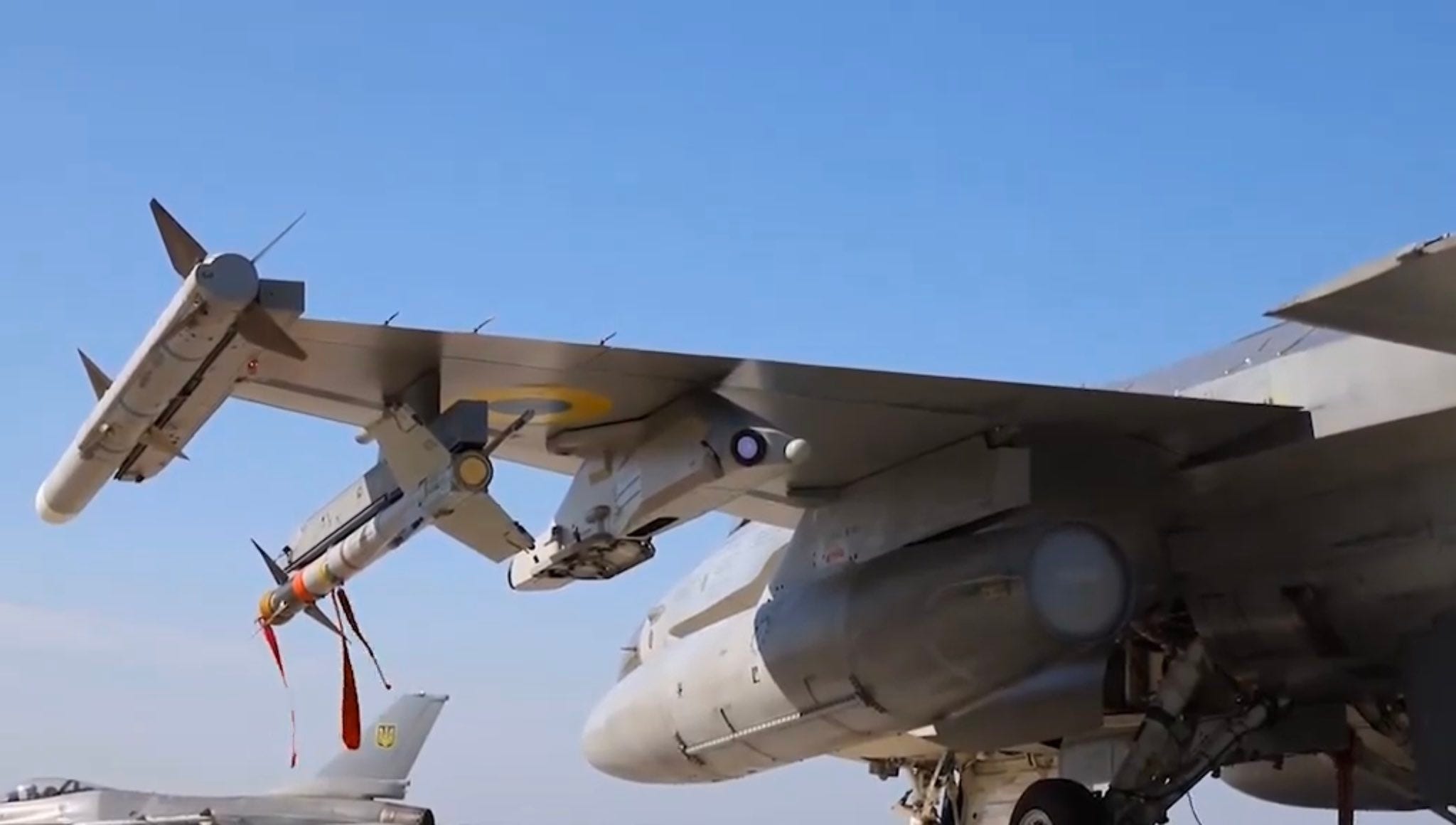Ukraine's F-16s Aren't Equipped For Long-Range Fights
Expect the fighters to target drones and cruise missiles first. Russian fighters—later.
American-made Lockheed Martin F-16s have arrived in Ukraine, a year after The Netherlands and Denmark—and later Belgium and Norway—pledged as many as 85 of the supersonic, single-engine fighters to Ukraine.
Ukrainian president Volodymyr Zelensky celebrated the arrival of the first few F-16s—ex-Danish examples, apparently—at a ceremony on Sunday. At the same time, the first photos and videos depicting the Ukrainian F-16s in the air and on the ground began to circulate.
A video published by Zelensky’s office point to the F-16s’ possible equipment fit.
The fighters carry the Israeli-Danish Pylon Integrated Dispensing System and Electronic Combat Integrated Pylon System—PIDS and ECIPS—integrated with mid-wing weapons pylons.
PIDS ejects chaff and flares to spoof radar- and infrared-guided missiles. ECIPS houses passive defenses to complement the active chaff and flares, including the AN/ALQ-162 jammer for defeating air-defense radars on the ground as well as an AN/AAR-60 missile warning system.
The F-16’s armament is what you might expect: AIM-9 infrared-guided dogfighting missiles as well as AIM-120 radar-guided air-to-air missiles for longer engagements.
But not very long engagements. Despite some indications that Ukraine might get the longest-range D version of the AIM-120—a missile capable of hitting targets as far away as 100 miles—it seems the 1990s-vintage B version is the Ukrainian F-16 fleet’s main beyond-visual-range missile.
An AIM-120B probably ranges less than 40 miles under ideal conditions.
Considering that more and more Russian warplanes—Mikoyan MiG-31s and Sukhoi Su-35s initially, Sukhoi Su-30s more recently—carry Russia’s very-long-range R-37M missile, which travels as far as 190 miles under the right conditions, the F-16s’ load-out is telling.
“The weapons … seen at the official F-16 unveiling in Ukraine today suggests an initial focus on internal air-defense sorties against Shahed/Geran one-way attack drones and cruise missiles,” wrote Justin Bronk, an analyst with the London-based Royal United Services Institute.
Small drones and cruise missiles don’t shoot back, meaning an attacker doesn’t need stand-off munitions to target them and survive. By contrast, you don’t fight an R-37-armed Su-35 without the best possible weapons.
That Ukraine’s F-16s apparently aren’t armed for long-range fights at present doesn’t mean they won’t ever be. “The United States will supply Ukraine with AMRAAM aircraft missiles with a range of 160 to 180 kilometers,” Yuriy Inhat, a Ukrainian air force spokesperson, said last year, apparently referring to the AIM-120D.
So don’t expect heroic fighter-on-fighter combat from Ukraine’s first few F-16s. Instead, expect the F-16s to clean up marauding drones and cruise missiles. More dramatic fights might have to wait for more dramatic weapons.
Read more:
Russia May Have Blown Up Ukraine's Yak-52 Drone-Killer
It’s possible a Russian attack on Monday damaged or destroyed that Yakovlev Yak-52 training plane…






